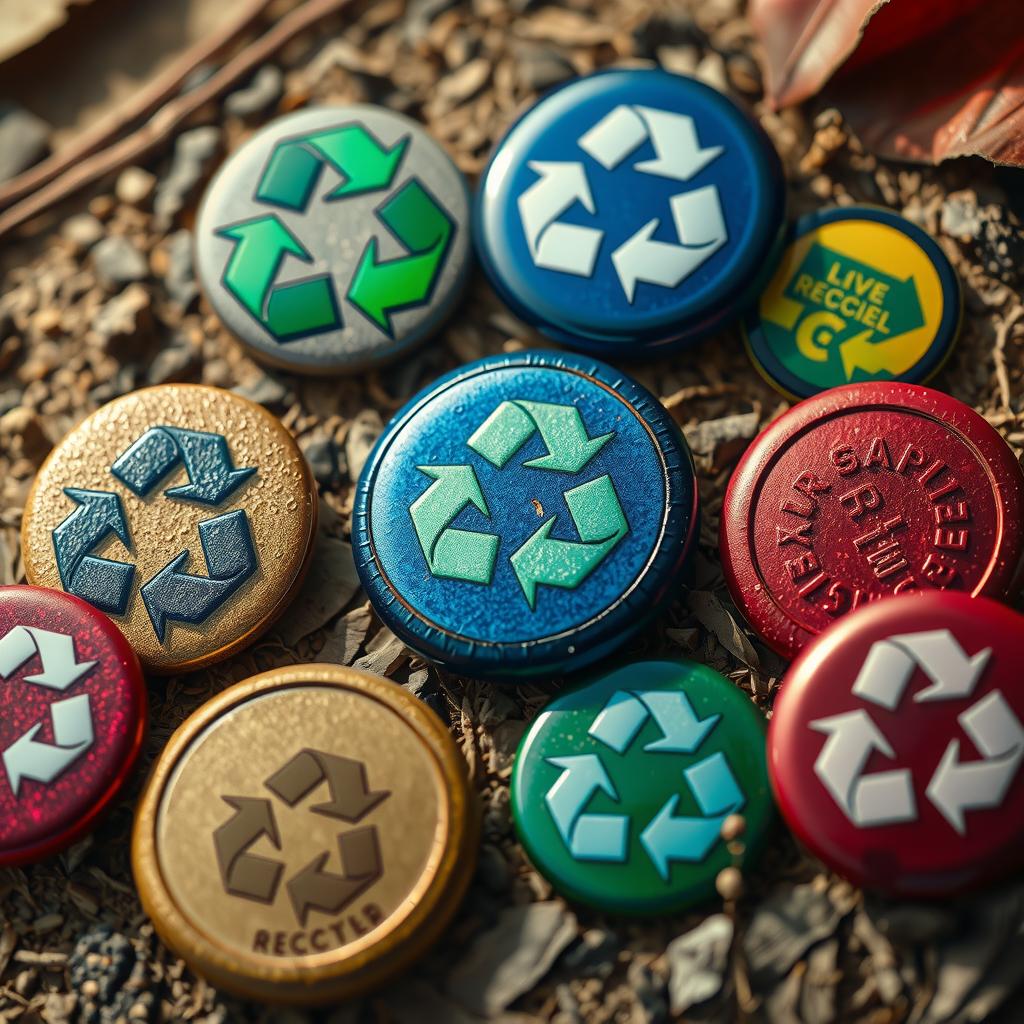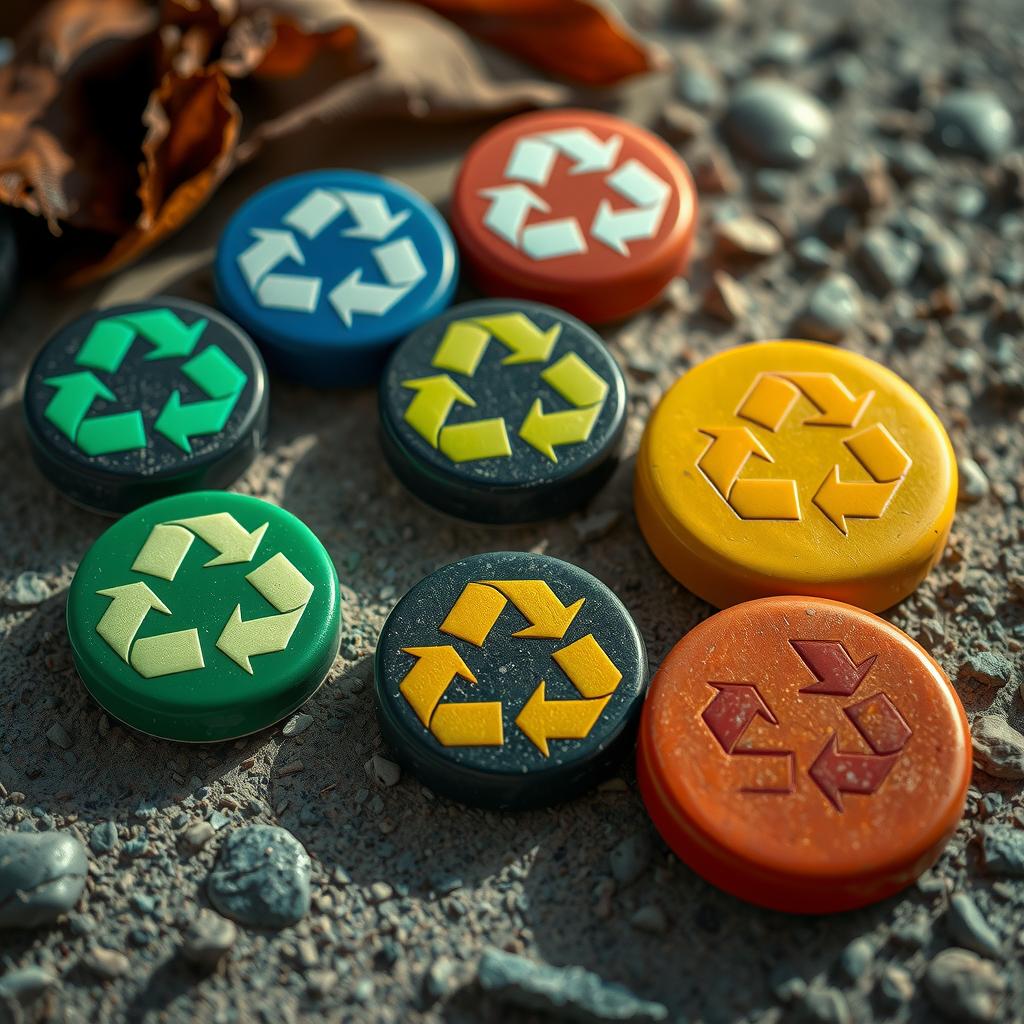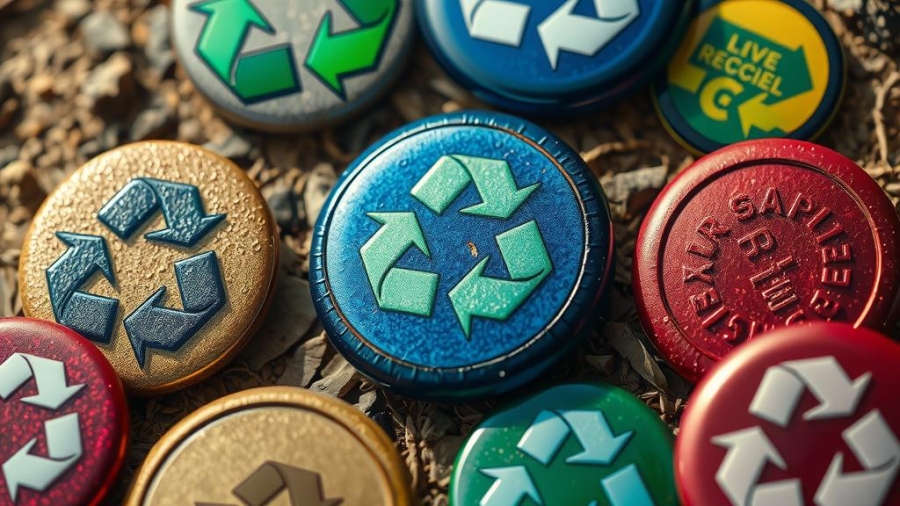Have you ever stood in front of your recycling bin, puzzled by the various symbols on plastic containers? Understanding these markings is crucial for effective waste management and can make a significant difference in promoting sustainability. As environmental awareness continues to grow, recognizing recycling symbols becomes an essential skill that empowers individuals to contribute meaningfully to eco-friendly practices.
This comprehensive “Recycling Symbols Identification Guide” aims to demystify the often-overlooked language of recycling symbols. By elucidating what each symbol represents, this guide provides readers with practical knowledge that can enhance their ability to identify recyclable materials accurately. This understanding not only fosters personal responsibility but also plays a vital role in larger waste reduction strategies.
Navigating through the maze of different plastics and other recyclable items may seem daunting at first glance; however, this article will serve as a valuable resource for those eager to engage in responsible waste disposal. The core value lies in its ability to equip readers with actionable insights into how they can make informed choices when it comes to recycling and waste management. Whether one is sorting through common household items or exploring more complex materials, knowing which products are recyclable—along with their corresponding symbols—is imperative for effective participation in sustainable practices.
Transitioning seamlessly into the heart of waste management solutions begins here: by familiarizing oneself with these important identifiers, individuals can not only reduce landfill contributions but also support broader ecological initiatives aimed at preserving our planet’s resources. The following sections will delve deeper into specific recycling symbols and offer clarity on plastic identification along with other related materials.
As readers embark on this journey toward enhanced environmental consciousness, they will discover that adopting small yet impactful changes—like mastering the art of reading recycling symbols—can lead them down a path filled with positive contributions towards global sustainability efforts. So let’s dive right into this essential guide and unlock the secrets behind those seemingly cryptic icons!

Key Points:
-
Understanding Recycling Symbols: The Recycling Symbols Identification Guide serves as a crucial resource for individuals aiming to navigate the complexities of waste management. By familiarizing themselves with various recycling symbols, readers can enhance their eco-friendly practices and contribute positively to environmental awareness. This understanding aids in making informed decisions about how materials should be disposed of or recycled, ultimately fostering responsible behavior that aligns with sustainability tips.
-
Impact on Waste Management: Knowledge of recycling symbols directly influences effective waste management strategies. The guide empowers users by providing clear explanations of common plastics and materials, thus facilitating proper plastic identification during disposal. As individuals learn to sort items correctly according to the guidelines presented in the Recycling Symbols Identification Guide, they significantly improve recycling processes within their communities, promoting a more sustainable approach to consumption.
-
Encouragement Toward Eco-Friendly Practices: Engaging content within the Recycling Symbols Identification Guide not only demystifies complex waste streams but also inspires readers to adopt better habits in their daily lives. Understanding these symbols helps individuals recognize their impact on pollution reduction and encourages participation in community initiatives focused on sustainability. By incorporating this knowledge into personal routines, people can implement effective waste reduction strategies that align with modern environmental standards while fostering collective action against ecological challenges.

Understanding Recycling Symbols: A Key to Effective Waste Management
The Significance of Recognizing Recycling Symbols in Sustainable Practices
Recycling symbols serve as vital tools in promoting sustainable waste practices and enhancing environmental awareness. These symbols, often found on packaging materials, represent various types of recyclable materials and provide essential information about how to properly dispose of or recycle these items. By familiarizing oneself with the recycling symbols identification guide, individuals can significantly contribute to effective waste management strategies. For instance, the widely recognized triangular symbol with arrows indicates that an item is recyclable; however, understanding the specific number within this triangle is crucial for determining its correct recycling process. Each number corresponds to a type of plastic and informs users whether it can be recycled locally or should be disposed of differently.
Moreover, recognizing these symbols fosters eco-friendly practices by encouraging consumers to make informed choices regarding their purchases and disposal methods. When shoppers understand which products are designed with recyclable materials—thanks to clear labeling—they are more likely to select those options over non-recyclable alternatives. This conscious decision-making not only supports individual efforts toward sustainability but also influences manufacturers and retailers to adopt greener practices by increasing demand for environmentally friendly products.
The role of recycling symbols extends beyond mere identification; they also play a part in educating the public about waste reduction strategies. For example, knowing how different plastics break down during recycling processes helps consumers avoid contamination in their bins—a common issue that disrupts effective recycling operations. Furthermore, integrating sustainability tips into daily routines becomes easier when one understands what each symbol represents; this knowledge empowers individuals to minimize their environmental impact actively.
Effective communication around these concepts enhances community engagement regarding proper waste management techniques as well. As communities implement local programs aimed at improving recycling rates, having a shared understanding of plastic identification through recognizable symbols ensures everyone contributes towards cleaner neighborhoods and sustainable living environments.
In conclusion, embracing the significance behind recycling symbols not only aids individuals but also cultivates a collective responsibility toward protecting our planet’s resources. Through enhanced education on identifying these marks—paired with actionable insights from comprehensive guides—consumers can engage in meaningful conversations surrounding sustainability while fostering behaviors that lead directly towards reduced waste generation and improved ecological health.

Decoding Common Recycling Symbols: Empowering Informed Choices
Understanding the Importance of Recycling Symbols
Recycling symbols serve as a vital guide in waste management, playing an essential role in informing consumers about how to dispose of materials responsibly. The Recycling Symbols Identification Guide offers insights into frequently encountered symbols, each representing different types of recyclable materials and their specific recycling processes. For instance, the widely recognized triangular symbol with arrows indicates that a product is recyclable; however, it does not always convey the exact method for doing so. This inconsistency can lead to confusion among individuals striving to adopt eco-friendly practices and reduce waste effectively. By familiarizing themselves with these symbols, consumers can make informed choices that align with sustainability tips aimed at minimizing environmental impact.
In addition, understanding plastic identification codes—from 1 (PETE) to 7 (other)—is crucial for proper material disposal. Each code provides information about the type of plastic used and its recyclability status. Many households unknowingly place non-recyclable plastics in curbside bins due to lack of awareness surrounding these codes; thus, education around this topic is critical for reinforcing environmental awareness and enhancing recycling rates across communities. The knowledge conveyed through resources like the Recycling Symbols Identification Guide empowers individuals by equipping them with strategies they can apply daily to support effective waste reduction strategies.
The influence of recycling symbols on consumer behavior cannot be overstated—these icons often dictate how people engage with products from purchasing decisions through end-of-life disposal methods. A clear understanding helps prevent contamination within recycling streams which is one major hurdle faced by many municipal systems today; when non-recyclables are mixed in with recyclables, entire batches may be sent to landfills instead of being processed properly. Therefore, educating oneself on these symbols becomes imperative not only for personal responsibility but also for fostering collective efforts toward sustainable living.
Moreover, utilizing such guides allows communities to come together in promoting better practices throughout local initiatives or educational programs focused on eco-friendly habits and sustainable solutions tailored specifically towards addressing unique regional challenges related to waste management issues. With increased guidance provided by sources like the Recycling Symbols Identification Guide, individuals will find it easier than ever before both understand what items are truly recyclable while simultaneously feeling encouraged towards adopting greater levels accountability regarding their consumption patterns moving forward.
Ultimately—by engaging deeply with decoding common recycling symbols—you empower yourself as well as others around you! Each conscious decision made contributes significantly towards creating more resilient societies adept at tackling pressing ecological concerns head-on while prioritizing long-term health benefits derived from responsible resource management approaches embraced collectively over time through shared commitment grounded firmly upon principles shaped largely via comprehensive education efforts concerning appropriate use interpretation accompanying visual cues embedded across every aspect modern-day life we encounter daily!
Sustainable Living Strategies
Enhancing Eco-Friendly Habits for a Greener Future
In the pursuit of sustainable living, one often thinks first of recycling symbols, but there are myriad strategies that extend beyond this fundamental practice. To effectively reduce waste and foster eco-friendly habits, individuals can adopt various measures that contribute significantly to community sustainability efforts. For instance, engaging in waste reduction strategies entails not only understanding the recycling processes indicated by the recycling symbols but also prioritizing reusable products over disposable ones. By opting for items such as cloth shopping bags or stainless steel water bottles instead of single-use plastics, individuals can drastically decrease their ecological footprint while promoting environmental awareness among peers.
Furthermore, an integral component of enhancing eco-friendly practices lies in educating oneself about proper waste management techniques. The Recycling Symbols Identification Guide serves as an invaluable resource in this regard; it enables consumers to discern which materials are recyclable and how best to dispose of them responsibly. This knowledge empowers communities to engage collectively in reducing landfill contributions and encourages local initiatives focused on recycling education.
Additionally, composting organic waste is another effective way to minimize garbage output while enriching soil health through natural fertilizers. Many households find success with home composting bins or participating in municipal programs designed for organic material collection—thus contributing further toward sustainable community goals. Incorporating these methods into one’s daily routine cultivates a culture where environmentally conscious choices become second nature.
Moreover, fostering connections with local environmental organizations presents opportunities for collaboration on sustainability projects within neighborhoods—be it tree planting events or clean-up drives along beaches and parks—which amplifies both individual actions across broader demographics towards significant impact.
Ultimately, embracing comprehensive sustainability tips requires continuous learning and adaptation; from recognizing the intricacies highlighted within the plastic identification systems prevalent today to actively participating in discussions regarding effective solutions for our planet’s future challenges—every action counts towards building a more resilient ecosystem together as a community committed to change.
FAQ:
Q: What are recycling symbols, and why are they important?
A: Recycling symbols are graphical representations that indicate how materials should be disposed of or recycled. They play a crucial role in waste management by helping individuals make informed decisions about material disposal, ultimately contributing to environmental awareness and sustainability efforts.
Q: How can the Recycling Symbols Identification Guide help me with eco-friendly practices?
A: The Recycling Symbols Identification Guide provides clear explanations of various recycling symbols commonly found on packaging. By understanding these symbols, readers can enhance their eco-friendly practices by sorting materials correctly and making better choices regarding what to recycle.
Q: Why is it essential to understand plastic identification in the context of recycling?
A: Understanding plastic identification is vital because different types of plastics have distinct recycling processes. By utilizing the Recycling Symbols Identification Guide, individuals can effectively navigate these complexities, leading to improved waste reduction strategies and more efficient recycling habits.
